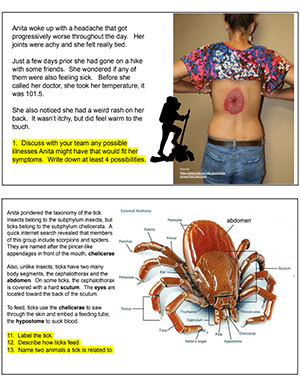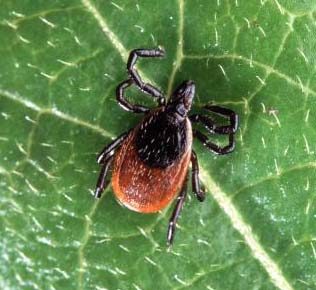
Students explore a medical case study where a woman has a strange rash on her back in the shape of a bullseye. This rash is typical for someone infected with Lyme disease.
The case uses Google slides to progress through the story of how she got the disease and how it was diagnosed. I designed this for a class that studies invertebrates and wanted to focus on animal vectors of disease. Lyme disease has been increasing in cases across the United States.
Students learn about tick anatomy and how ticks attach to the body to get a blood meal. They also learn about ways to safely remove a tick by viewing an infographic from the CDC.
In the final section of the activity, students examine data that shows cases across the United States. Data reveals that Lyme disease cases have increased in number since 1990.
Finally, students must design a fact sheet that informs readers about Lyme disease. They can create the fact sheet using Google docs or slides. Encourage students to be creative!
Related Lessons

Because this is a biology class, the case includes tick biology, bacteria biology, and disease symptoms and treatment. You can put the slides on an overhead and students complete a handout that matches the slides.
You can pair this lesson with the Invertebrate Diversity Lab Station Activity, where students can observe different types of invertebrate specimens. I also have several tick slides where students can view specimens. You can order slides from biological supply companies, or if you are adventurous, you can collect them yourself!

